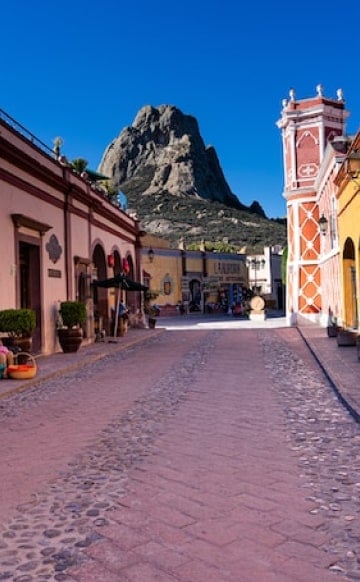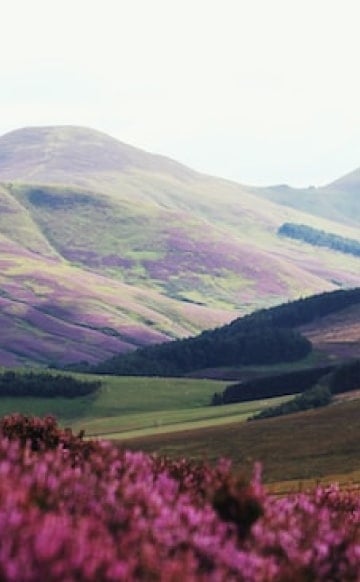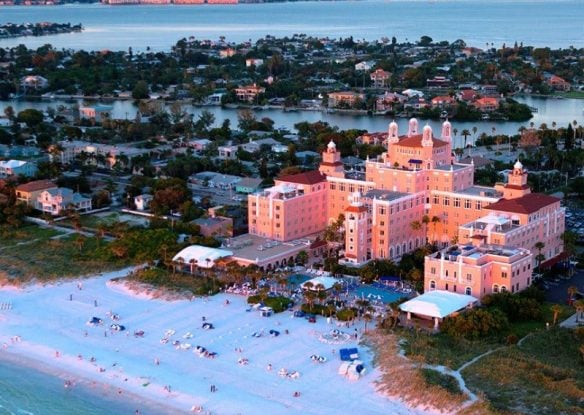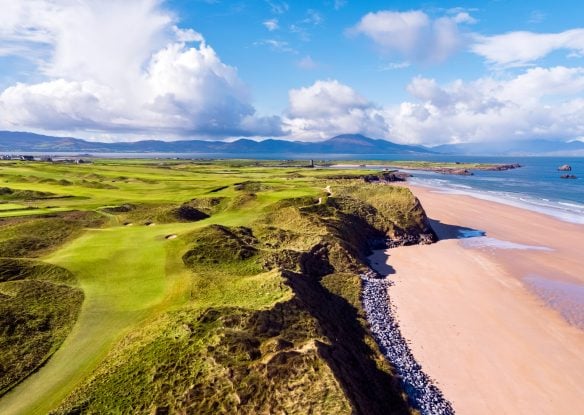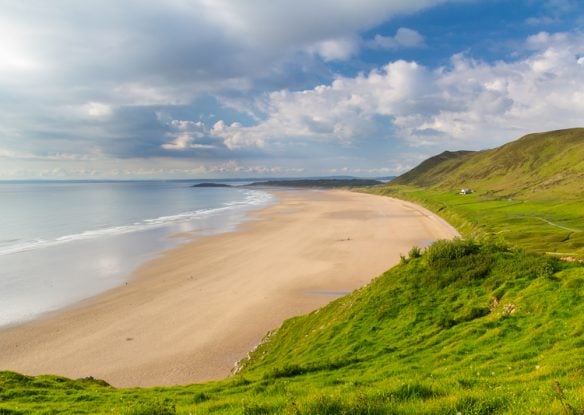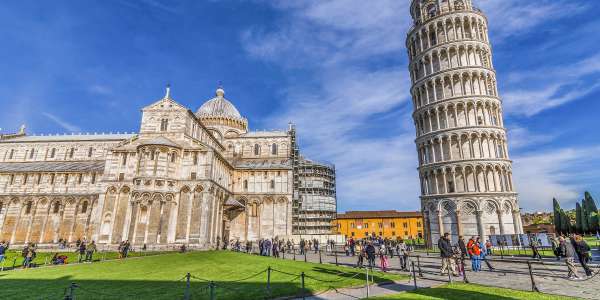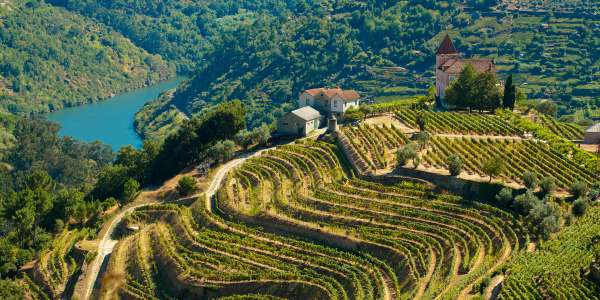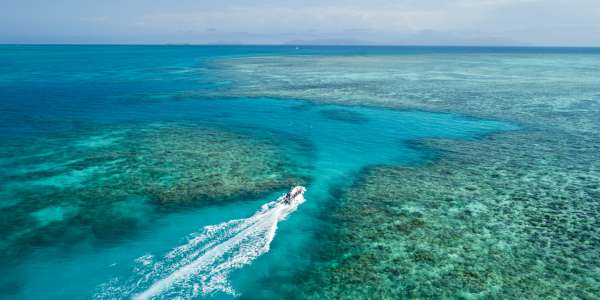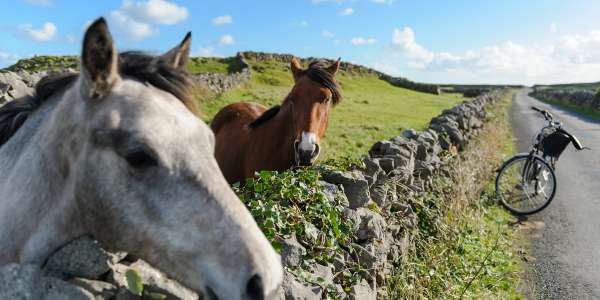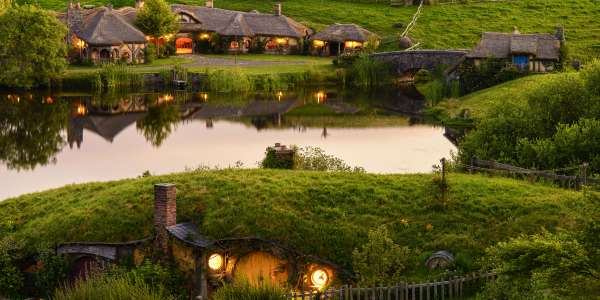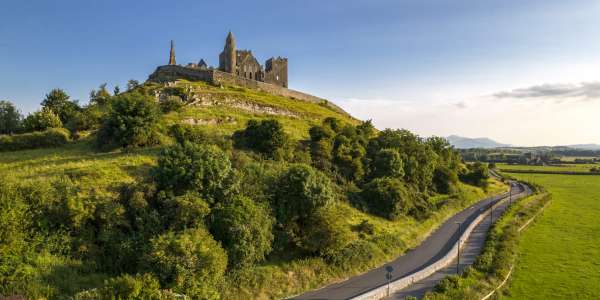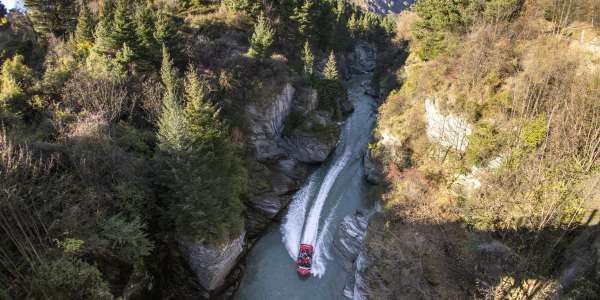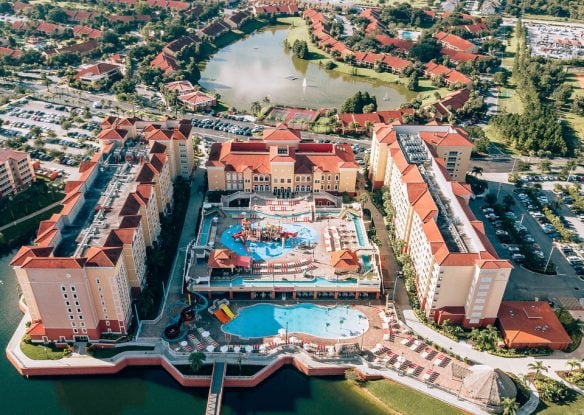The often forgotten side of the United Kingdom, Wales is frequently missed by travelers to the region, but as the home of some of Europe’s most beautiful beaches, incredibly scenic walks, stunning castles, lush green hills and distinct Celtic culture – not to mention great beer, Wales is a place that should be on your itinerary. And, while you’re there, be sure to put these magical destinations on your must-see list.

Llanrwst, Conwy
Llanrwst sits in the picturesque Conwy Valley, a busy little town on the east bank of the River Conwy. While the steep and elegant 16th-century stone bridge known as Pont Fawr is its focal point, sitting adjacent to it is one of the most photographed buildings in North Wales, the flowering 15th-century cottage, Ty Hwnt I’r Bont, or the House Beyond the Bridge. Today, the cottage which was a courthouse in earlier years is a tea room. Many travel from far and wide to enjoy its famous cream tea and a picnic on the banks of the river.

Margam Castle, Neath Port Talbot
Built between 1830 and 1840, this massive Tudor Gothic mansion was designed by the architect Thomas Hopper for Christopher Rice Mansel Talbot. The goal was to create a grand residence that would complement the rich history of Margam, and make a statement that would emphasize the family’s rank and historical importance. As the architect was encouraged to let his imagination run free, the result was a Victorian fantasy, complete with towers, turrets, gables and pinnacles, cupolas and battlements, centered around three courtyards. In partial ruin today, it’s now owned by the Neath Port Talbot County Borough Council, used for hosting events and conferences, while the grounds are a popular park for visitors to stroll, picnic and watch the deer the roam the landscape. The castle has also become quite a popular spot for paranormal investigation groups, including “Ghost Hunters International”. By taking the ghost walk, you’ll hear some of the stories of the reputed hauntings.

Caernarfon Castle - Caernarfon, Gwynedd
One of the most famous castles in Wales, the massive structure is considered to be one of the most impressive and best preserved medieval fortresses in all of Europe. It looms over the busy town of Caernarfon in north-west Wales, built by Edward I following his defeat of the last native Welsh prince in 1283. The imposing castle occupies the site of an even older Norman castle, dominating the waters of the River Seiont and the Menai Strait on one side, protected by a moat on the other. Many remember it as the venue for Prince Charles’ investiture as Prince of Wales in 1969. A visit to the castle today is made even more interesting through displays and informative exhibitions throughout the towers.

The Fairy Glen - Betws y Coed, Conwy
The Fairy Glen is a secluded gorge on the picturesque River Conwy, located just a short distance from Beaver Bridge on the outskirts of Betws y Coed in the Conwy valley. The thickly wooded gorge is a protected wildlife site and has a significant population of rare ferns and lichens as well as beautiful flowering plants like early purple orchid. This lovely destination is a favorite with artists and photographers and is also said to be the spot where the late poet Wuhelmina Stitch “waits and waits” to see fairy men. The river plunges through a Victorian fish ladder and is channeled through a narrow ravine, forming beautiful cascading rapids. In addition to the fairies that you can practically see flittering about, keep an eye out for otters that have been spotted here. The Fairy Glen is easily reached with about a 15-minute walk down a path from the Fairy Glen Hotel.

St Govans Chapel, Pembrokeshire
This tiny medieval church that clings to a ragged rock halfway down the cliffs of a secluded headland is surely Britain’s most stunningly situated church. The site was once the home of 6th-century hermit St. Govan, who established a lonely cell for himself here in the fashion of early Celtic Christian monks. Legends arose over time about the saint, as well as the curative properties of the natural spring that used to rise just inside the chapel door. During medieval times, the holy well and the hermit’s cell became a popular place of pilgrimage for cripples seeking a cure. In the 13th-century, the original cell was transformed into the small chapel. Carefully count the very steep steps down, and up again – legend has it that the number is never the same.

Anglesey and the South Stack Lighthouse
The Isle of Anglesey is Wales’ largest island, separated from the mainland by the mile-wide Menai Strait and spanned by the Menai Suspension Bridge. It’s a popular destination for visitors with miles of beautiful coastline, hidden beaches, chocolate-box villages and the greatest concentration of ancient sites in Wales. South Stack Lighthouse is set in an especially stunning location to the north-west of Holyhead, serving as a waymark for coastal traffic and orientation light for vessels crossing the Irish Sea to and from Dun Laoghaire and Holyhead. Lighthouse tours are offered after you’ve followed the light keeper’s journey down the 400 steps onto the island to view the fascinating geology of the surrounding cliffs. Linked to Anglesey by a bridge, the smaller Holy Island, is a popular holiday resort with two promenades.

Tintern Abbey - Tintern, Gwent
Tintern Abbey dates back to the 12th century and is said to have inspired poems by William Wordsworth, Lord Tennyson and Allen Ginsberg, as well as at least one painting by J. M. W. Turner. One of the greatest monastic ruins of Wales, it was only the second Cistercian foundation in Britain, and the first in Wales, founded on May 9, 1131 by Walter de Clare, lord of Chepstow. Today, its appeal remains as enduring as ever, sitting in an area of outstanding natural beauty, complemented by its own. The present-day remains are a mixture of building works covering a 400-year period between 1131 and 1536. Very little remains of the first buildings, but you’ll be amazed at the vast windows and later decorative details displayed in the walls, doorways and soaring archways.

Elegug Stacks - Castlemartin, Pembrokeshire
These pillars of rock that sharply rise from the sea were once a part of the mainland, but overtime, raging waters wore the rock away, leaving the stacks separated from the mainland. Made up of Carboniferous Limestone, they’re important nesting sites for kittiwakes and guillemots. In fact, Elegug, a poetic sounding Welsh word, means guillemot. You can visit the Elegug Stacks and St. Govan’s chapel all at once by taking a three-mile stretch of the Pembrokeshire Path National Trail. Begin with a slight detour west to stop at the Green Bridge a Wales, a wide rock arch that rises out of the sea, and continue along in a southeasterly direction to enjoy the breathtaking coastal scenery and the Elegug Stacks. You’ll see picturesque bays, colonies of nesting birds, blowholes and rocky gorges before coming to the medieval chapel.

Pembrokeshire Coast National Park
Pembrokeshire Coast National Park is the only coastal national park in Wales. A hiker’s paradise, it’s best known for the Pembrokeshire Coast Path, which winds for 186 miles along the tops of the cliffs that overlook the rugged shoreline. Watch for seals that soak up the sunshine from the rocks below, as well as the hundreds of species of birds that fly overhead. You’ll also find the opportunity for surfing, the traditional type as well as wind and kite surfing along the area’s multitude of beaches, and the chance to explore an ancient castle or two.

Abereiddy Beach and the Blue Lagoon, Pembrokeshire
This gorgeous beach consists of pebbles and exceptionally dark sand made up of pounded grey slate, and it’s this same slate that provides the intense deep blue color of the waters in the Blue Lagoon which sits just north of the beach. It’s an ideal place to enjoy a little quiet contemplation and fresh air, or perhaps even a swim on a warm summer day. In fact, it’s jumping into the brilliantly hued lagoon that most people come here for, hurling themselves off the blackened walls of the old quarry and into the refreshing clear, deep water.
If you’re in the mood for a walk, the lagoon can be reached via a 4-mile circular route that begins at the south side of Porthgain Harbour, exploring some of the region’s finest coastal scenery as well as its industrial past. Walk just below the brick hoppers on the south side of the harbor where you’ll need to climb the steps next to a white building to reach the coastal path. After turning at the sharp left bend at the corner of a field, the tower above Abereiddy Beach comes into view as the path continues along a section of dramatic, high cliffs. Follow it on across the open grassland to the beach, continuing to enjoy more spectacular views and the Blue Lagoon.

Skomer Island, Pembrokeshire
Skomer Island, one of the most picturesque Welsh islands, is situated just off the Pembrokeshire coast. To get there, you’ll take the Dale Princess, a passenger boat from Martin’s Haven, a small cove near Marloes village. Once there, you’ll enjoy breathtaking scenery as well as the chance to see all types of wildlife. In fact, about half the world’s population of Max shearwaters nest on the island, and its Atlantic puffin colony is the largest in southern Britain. The island is also home to fascinating archeological sites like the remains of prehistoric houses, stone circles and standing stone. If you want to spend the night and experience the incredible sounds of the island, with thousands of Max shearwaters soaring through the sky after dark, self-catering accommodation is offered at the Old Farm.

Dan-Yr-Ogof Caves and the National Showcaves Centre of Wales, Powys
There are actually three caves that are part of the National Showcaves Centre of Wales, located in the upper part of the Tawe Valley: Dan-yr-Ogof, Cathedral Cave and Bone Cave. Each offers a unique underground experience that has been previously voted “Britain’s Finest Natural Wonder.” Dan-yr-Ogof is filled with stalactites and stalagmites, as well as a multitude of spectacular passes and chambers. Cathedral Cave offers the chance to explore enormous, beautiful passageways that were carved out millions of years ago. At Bone Cave, you’ll discover the story behind the 42 human skeletons that were excavated from the site. All in all, the network of caves stretches for ten miles, with some of the most accessible areas floodlit. The tourist attraction also includes a replica Iron Age village, stone circles and a dinosaur park.

Llyn Y Fan, Carmarthenshire
This remote and stunning lake is shrouded in Welsh legend as the location of one of Wales’ best-known folk tales, The Lady of the Lake. The area is home to numerous scenic walks, but be sure to bring a sturdy pair of boots and a decent level of fitness as the hills are rather steep.

Snowdonia National Park - Penrhyndeudraeth, Gwynedd
One of the first places that comes to mind when most people envision Wales is the beautiful mountains and hills of Snowdonia. Made up of 14 majestic peaks that are more than 3,000 feet high, including the famous Mount Snowdon at 3,546 feet, Snowdonia can be seen as far away as Porthmadog on the west coast. The summit of Mount Snowden can be accessed by the Snowden Mountain Railway in the heart of the national park. Once at the top, you’ll feel as if you’re truly on top of the world. It’s easy to see why this region is so often featured in local legends, including those based around King Arthur. The area can also be explored on foot, as one of the most popular hiking destinations in Britain, and it’s also home to a long coastline of sandy beaches and soaring cliffs, including the Llyn Peninsula, a protected “Area of Outstanding Natural Beauty.”

Brecon Beacons National Park, Brecon
This magnificent park encompasses some of Wales’ most breathtaking areas, bordered by two distinctly different sets of Black Mountains. The east is famous for its wild ponies, while the west is the source of the River Usk. The grassy, heather-clad mountains are a hiker’s paradise, with most in the 520-square-mile park higher than 1,000 feet, and many surpassing 2,000 feet in height. There are also some 268 ancient monuments to be discovered here, including ancient standing stones, Roman ruins, Iron Age hill forts and Bronze Age burial cairn, though most visit for the impressive and diverse scenery with wide open hillsides and wild forests, rolling countryside and valleys, glistening lakes, waterfalls and caves.

Devil's Bridge and the Hafod Estate
Devil’s Bridge and the Hafod Estate, located 12 miles from the seaside town of Aberystwyth, makes for an ideal day trip. Haford Estate features 200-acres of beautifully restored woodlands and 18th-century gardens that were once considered Britain’s finest. While the manor house is no longer there, the estate still offers scenic hikes along well-marked trails past ancient trees, waterfalls and the old walled formal gardens. If you fall in love with it so much you don’t want to leave, you can stay at the lovely old Hawthorn Cottage. Devil’s Bridge, includes three bridges that span the Rheidol Gorge, stacked one-atop-the-other, with the oldest dating back nearly 1,000 years. You’ll get a glimpse of the River Mynach as it drops 300 feet into the valley below, and then you can follow the Falls Nature Trail to the bottom. The steep, slippery steps of Jacob’s Ladder then leads to the oldest bridge and especially striking views.

The Vale of Neath
The Vale of Neath, or Waterfall Country as its often referred to, was described in 1908 by Alfred Russel Wallace, who wrote: “I cannot call to mind a single valley that in the same extent of country comprises so much beautiful and picturesque scenery and so many interesting and special features as the Vale of Neath.” The “special features,” are the series of dramatic waterfalls that bless this valley that borders Brecon Beacons National Park. It also branches into Fforest Fawr Geopark, a site of geological importance. Highlights in the area include Aberdulais Falls as well as Neath Abbey, a Cistercian abbey founded in 1130, later transformed into an Elizabethan mansion.

Pistyll Rhaeadr, Powys
Listed as one of the Seven Wonders of Wales, Pistyll Rhaeadr is the highest waterfall in England and Wales at 240-feet high. It’s been captivating visitors for centuries, with people returning generation after generation to take in the almost magical presence felt here. It’s an ideal place of quiet contemplation as well as to explore the surrounding hills and Berwyn Mountains, with a wide range of walks available to suit just about every level of hiker. At Tan-y-Pistyll, which means little house under the waterfall, you can sip tea in the team room or even stay the night in B&B accommodations.


